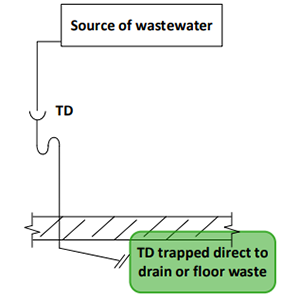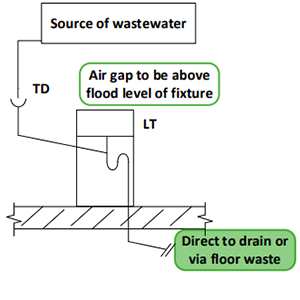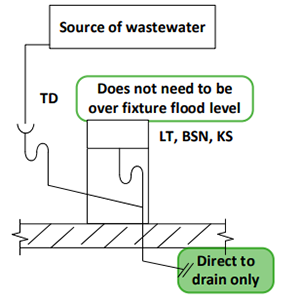Related information and links
This advisory note outlines the general installation requirements when connecting tundishes.
| Advisory note | 14/2021 |
| For | Licensees / Contractors / the Plumbing and Drainage Industry |
| Scope | Applies to all metropolitan and regional areas in NSW |
Issue
During recent audits of Class 2 buildings by the NSW Fair Trading Building Specialist Compliance Unit (BSCU), tundish installations are frequently installed in a non-compliant manner.
The following advisory note has been prepared to remind the industry of the general installation requirements regarding the connection of tundishes set out in AS/NZS 3500 Part 2, clause 13.21. Some additional referenced clauses have been listed to further help clarify the connection of tundishes to floor wastes.
Detail
13.21 Connection of tundishes
Tundishes may be connected—
(a) to a waste pipe, not smaller than DN 25, in accordance with Clause 4.6.7.8
(b) to a trapped waste pipe, not smaller than DN 40, in accordance with Appendix B, or
(c) to a fixture trap.
When the tundish and discharge pipe is connected to a fixture trap—
(i) the connection shall be made above the level of the water seal, and
(ii) the top of the tundish shall be above the flood level rim of the fixture.
Pipes discharging over a tundish shall have an air gap of a size at least twice the internal diameter of the discharging pipe.
Tundishes shall be accessible.
Considering AS3500.2, here are 3 common non-compliances related to tundish installations serving a condensate line that have been observed:
Non-compliant example 1
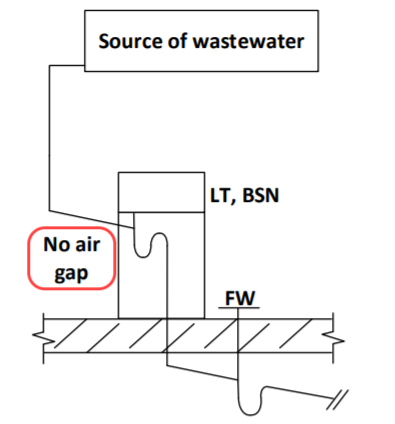
Installation does not comply with AS3500:2 c.13.21
Non-compliant example 2
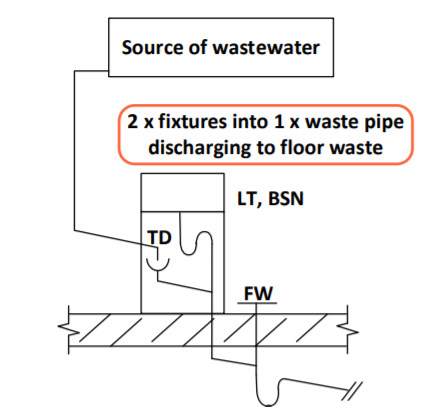
Installation does not comply with AS3500:2 c.4.6.7.3, c.13.21
Non-compliant example 3
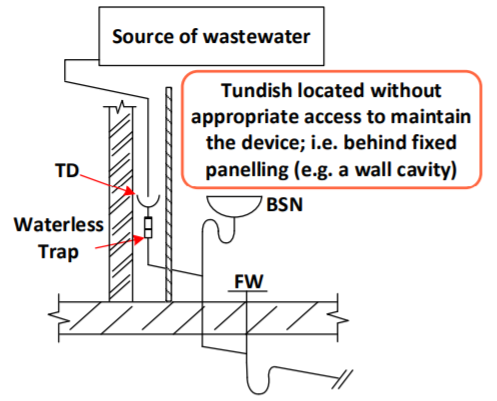
Installation does not comply with AS3500:2 c.4.6.7.3, c.6.5.1, c.13.21
4.6.7.2 Discharge to floor waste gullies
Fixtures listed in Table 4.6.7.2, and fixture pairs in accordance with Clause 6.5.4, may be connected to floor waste gullies and, except for tundishes, shall be located within the same room as the gully.
Table 4.6.7.2: Discharge to floor waste gullies
| Waste fixture | Maximum length of waste pipe m | ||
| Connected to riser of floor waste gully | Connected to submerged inlet floor waste gully (see Figure 4.6.7.2) | ||
| Fixture untrapped | Fixture trapped | Fixture trapped or untrapped | |
| Tundish (see Clause 4.6.7.8) | 10.0 | 10.0 | 10.0 |
Note: Floor waste gullies or similar traps directly connected to the drainage system and subjected to infrequent use shall be provided with an approved means of maintaining their water seals.
4.6.7.3 Connection of fixtures
Each fixture or fixture pair that is connected to a floor waste gully shall be connected by a separate waste pipe at a grade of not less than 2.5% and with a length not exceeding that specified in Table 4.6.7.2.
4.6.7.8 Discharges from tundishes
In addition to the discharges specified in Table 4.6.7.2, tundishes receiving discharges from water heater drains, air-conditioning units, other condensate lines, and the like, may discharge to a floor waste gully. The maximum length of the unvented discharge pipe shall not exceed 10 m.
It is important to also note the clause and table excerpts from AS3500:2. Some examples of compliant installations are shown below:
Compliant example 1
Compliant example 2
Compliant example 3
Compliant example 4
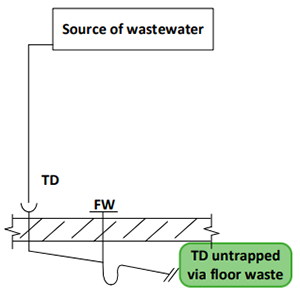
Compliant example 5
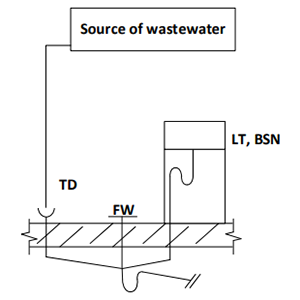
Compliant example 6
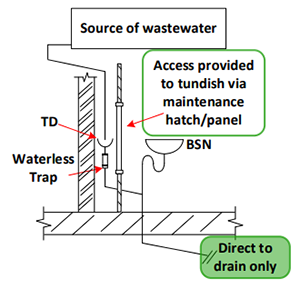
6.5.1 General
Each sanitary fixture and appliance shall have a trap or self-sealing device. The trap or self-sealing device shall be in the same room as the fixture and/or appliance that it serves and be accessible.
Issued by: Building Specialist Compliance Unit, Parramatta
Date: July 2021
